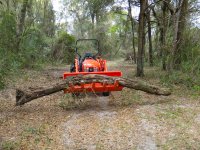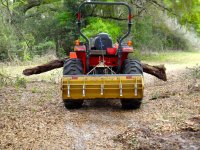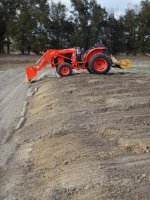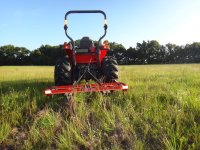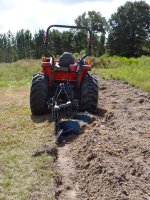Perhaps the most controversial of TBN topics.
I have sandy-loam in Florida. I never have mud, nor clay, nor snow, to deal with.
I have had three tractors, each larger, each with 4-WD. My last tractor and current tractor have carried FELs. All three have been shod with R4/Industrial Tires filled only with air.
I try not to compact my soil. The only time I intentionally compact my soil is when I roll in very small seeds with my Cultipacker, in a limited area.
When I need counterbalance, perhaps
25% of engine operating hours, I mount a heavy implement on the Three Point Hitch.
Filling rear tires is good if you have sloped ground to deal with. Filling rear tires lowers the center-of-gravity for the tractor. (But first move rear tires further apart, if possible.)
Filling rear tires may be necessary for adequate traction on tractors with 2-WD, but NEW tractors with 2-WD are a very small category.
A'hm for air.
TBN ARCHIVE:
FILLED VS AIR IN TIRES SITE:TRACTORBYNET.COM - Google Search In their own words. You'll be sorry. What is everyone else experience with this? I will be doing firewood and pushing snow around in the winter and what ever else presents itself for loader work. Thanks.
In their own words. You'll be sorry. What is everyone else experience with this? I will be doing firewood and pushing snow around in the winter and what ever else presents itself for loader work. Thanks.